

Archaeologists uncover all kinds of artifacts among ancient ruins, like ornate jewelry, simple baskets, and stone tools. One of the most common items found at archaeological sites is pottery, or objects made of clay. Looking at a single pot might tell you how old it was or how it was made. Looking at a group of pots might tell you how a society was organized.
Today, we usually think of pottery as decorative bowls and vases. But in ancient times, pottery was used to make many everyday things, such as dishes, cooking pots, and jars for storing food. Pottery was also used to make precious items, from sacred statues to musical instruments, like flutes.
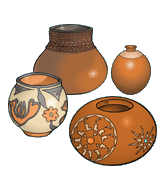
There's another reason why pottery is a common discovery: it doesn't disintegrate or decay as easily as things made of wood or cloth. Sometimes pottery is found in one piece, especially when it's found in a burial or offering. Most of the time, pottery is found broken into many pieces.
It can be a big challenge putting all the pieces back together, especially when some pieces are missing.
Archaeologists read the parts like pieces of a puzzle. They can tell which pieces go together by their shapes and colors.
Decorate, shatter, and piece together your own pottery artifact: a flowerpot. As you design your flowerpot, imagine archaeologists of the future finding it. What would it tell them about you?
What You'll Need
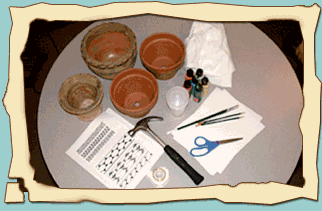
- A ceramic flowerpot (made of clay or terracotta)
- Paint or markers
- Piece of paper and a pencil
- Stencils of different designs (optional)
- An old pillowcase
- Rubber band
- Hammer
- Newspaper
- Scotch tape
What to Do
Create Your Piece of History
Imagine you are an artist who designs and decorates pottery for people in your community. Your next assignment is to decorate a flowerpot.

Before you begin, think about who will use your flowerpot: an important public figure? A local family? Will you use geometric designs, or symbols and images that reflect your community? (You can download stencils of different designs, or make your own.)

Choose your design and sketch it out on a piece of paper. You can do this several times until you are happy with the way it looks.
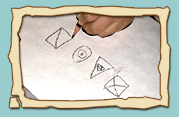


Make the design on your ceramic flowerpot using paint or markers. Wait for the paint to dry.
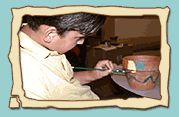
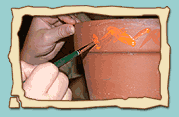
Turn it into Ruins
Imagine your community is abandoned over the centuries. Buildings collapse and many personal belongings are broken and buried. Your precious flowerpot is shattered and scattered among the ruins.

Place your pot inside a pillowcase. Close the open end of the pillowcase tightly using a rubber band or by tying a knot.

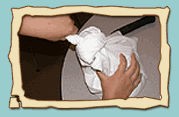

Smash the flowerpot using a hammer. If you need help, ask an adult to do it for you.
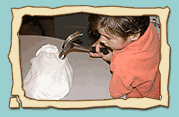
Piece it all Together
Now, imagine one thousand years have passed since you designed your flowerpot. An archaeologist discovers the site where your community once stood. After months of digging, she unearths many pieces of pottery. If you were that archaeologist, could you put the pieces together?

Take the larger pieces of the shattered flowerpot out of the pillowcase and spread them on a newspaper.

Try to reassemble the flowerpot piece by piece. Tape both sides of the pieces together with Scotch tape.
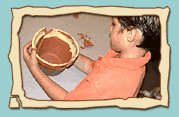
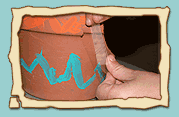
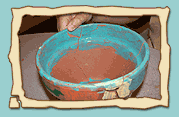
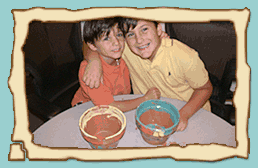
Think About it
When archaeologists find pieces of artifacts at a site, how do they know which ones go together?
Try This: Discover a New Artifact!
When archaeologists find pieces of pottery, they're faced with some big challenges: they have no idea what the original object looked like, the pieces may be mixed in with pieces of other artifacts, and several pieces might be missing. See how you do with these challenges:
- Decorate two flowerpots. Then, break them in the pillowcase, and try to put them back together. Is it harder to do it this time? Why?
- Ask a friend to decorate a flowerpot with designs and then break it in a pillowcase. Then, decorate another pot yourself and break it in another pillowcase. Now switch pillowcases, and try to put each other's pieces back together. Does it take longer? Can you figure out what the designs are?
- By yourself, or with a friend, decorate flowerpots and break them. This time, remove a few pieces from the pillowcase and put them aside. Then try to put the rest of the pieces together without the missing pieces. How does this change the activity?
Image Credits:
What to Do: all photos courtesy of AMNH




 Biodiversity
Biodiversity
 Brain
Brain
 Genetics
Genetics
 Marine BiOLogy
Marine BiOLogy
 MicrobiOLogy
MicrobiOLogy
 PaleontOLogy
PaleontOLogy
 ZoOLogy
ZoOLogy
 AnthropOLogy
AnthropOLogy
 ArchaeOLogy
ArchaeOLogy
 Astronomy
Astronomy
 Climate Change
Climate Change
 Earth
Earth
 Physics
Physics
 Water
Water
